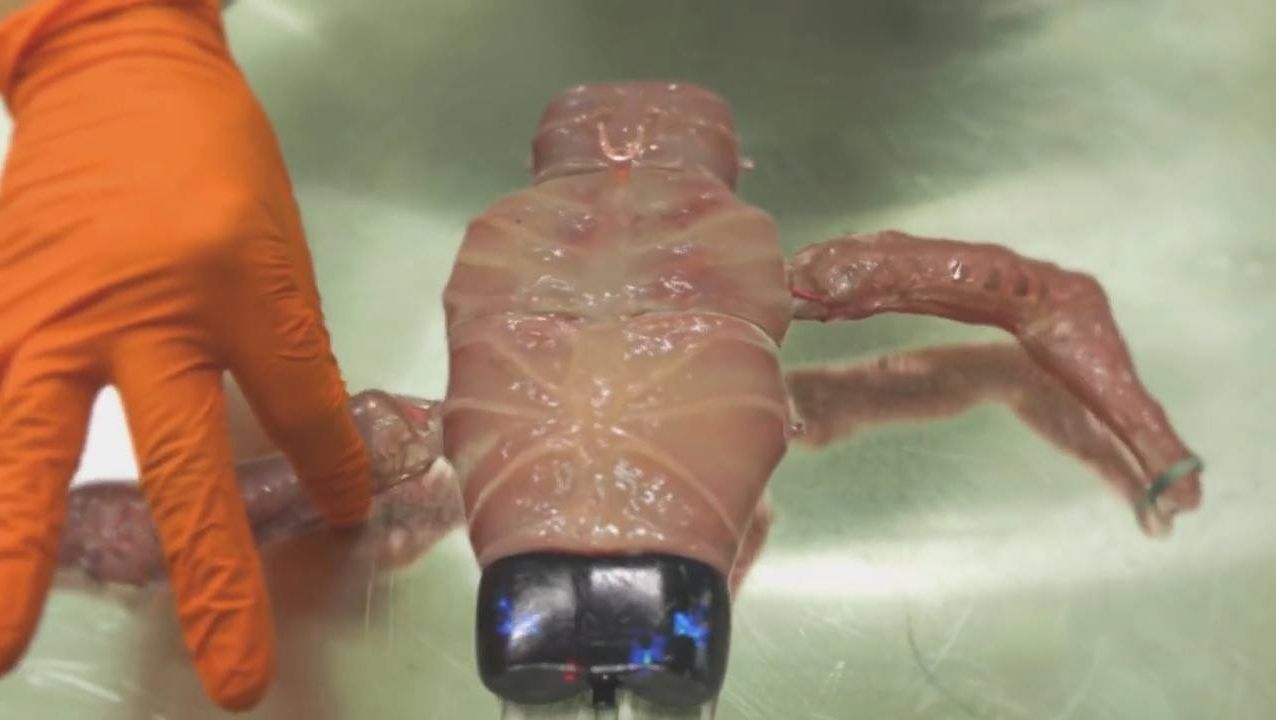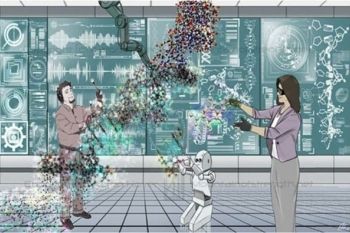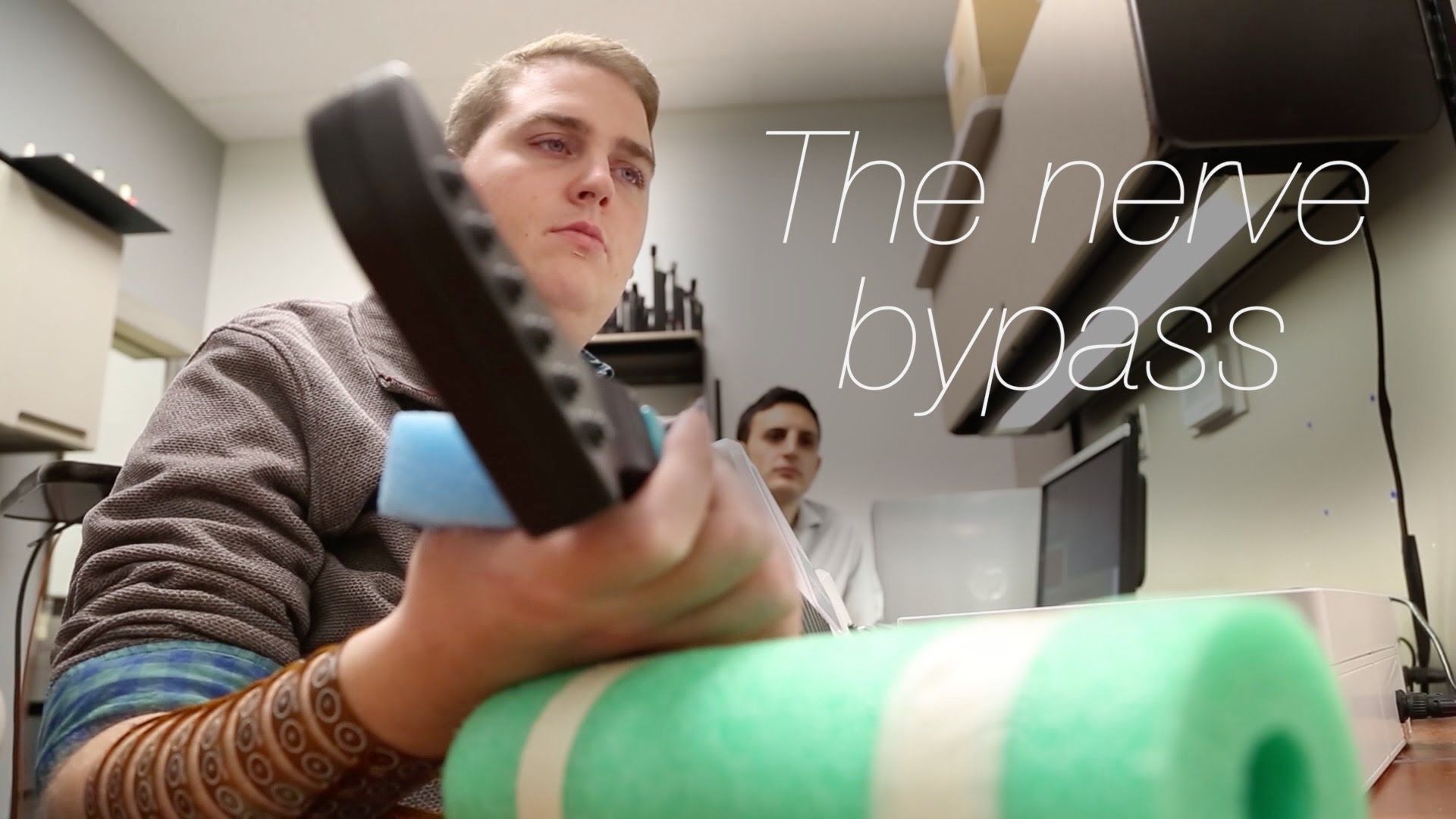Page 10972
Apr 14, 2016
Researchers at New York University are looking 25 years ahead to predict the role artificial intelligence will play in living, learning and research
Posted by Aleksandar Vukovic in category: robotics/AI
“Advanced cyber-learning environments that involve virtual reality and artificial intelligence innovations are becoming powerful tools that can facilitate the explorations and conversations needed to solve society’s challenges,” said NYU engineer Dr Winslow Burleson. “Cyber-learning is an essential tool for envisioning, refining, and creating a utopian world in which we are actively ‘elearning to be’ — deeply engaged in intrinsically motivating experiences that empower each of us to reach our full potential.”
Apr 14, 2016
The question of how exactly we experience the world through our perception of consciousness is one that’s long intrigued scientists and philosophers
Posted by Shailesh Prasad in categories: entertainment, neuroscience
And at its core are two divergent hypotheses.
On the one hand, it could be that consciousness exists as a constant, uninterrupted stream of perception, like how it feels to watch a movie. You sit down with your popcorn and experience a film from beginning to end in one continuous flow, unaware of any segmentation or breakup as you go.
But another hypothesis of consciousness reflects what a film technically is: a series of individual frames of time stitched together into a reel that – when played back – appear seamless. So which is it? Is consciousness a seamless film, or is it a reel composed of discrete moments?
Apr 14, 2016
A quadriplegic man is now able to play Guitar Hero, swipe a credit card and pour liquid into a glass with his own hand
Posted by Sean Brazell in category: futurism
Apr 14, 2016
The stealth ship is so hard to see that it needs a way to turn it off
Posted by Sean Brazell in category: futurism
Apr 14, 2016
Now that drones have become a standard tool in our military arsenal, the next job is to make them more efficient and capable than ever before
Posted by Sean Brazell in categories: drones, military, robotics/AI
DARPA’s newest invention is the Gremlin: a drone that be deployed from a bomber while in flight, execute its mission, and then return to an extraction point where a cargo plane yanks it out of the sky and brings it safely home.
The drones are capable of flying unmanned, but being able to retrieve them makes them reusable, which is both cost-effective and convenient. But drone retrieval also protects U.S. military technology and secrets. Sending fleets of tiny Gremlins on intelligence-gathering missions is one thing, but being able to recapture them instead of leaving them in the hands of hostiles is a huge boon to the military. Gremlin drones have up to three hours to accomplish reconnaissance missions, at which time they automatically fly back to a retrieval area to be collected by a C-130 cargo plane.
Related: DARPA’s 130-foot submarine-hunting drone will take to the sea in April.
Apr 14, 2016
All you need is $100,000 and 22 hours to get your own robotic hexapod
Posted by Sean Brazell in category: robotics/AI
Apr 14, 2016
Our conscious perception of the world feels like a continuous and uninterrupted flow
Posted by Sean Brazell in category: neuroscience
But a new study suggests that it’s actually more like the frames of a movie reel running through a projector.
There’s still a lot we don’t know about consciousness and how it arises in the brain. Even though perception—such as vision and hearing—feels smooth and uninterrupted, neuroscientists aren’t entirely sure if it flows continuously like water through a tap or if it’s more like the aforementioned 24-frame-per-second movie reel.
http://io9.gizmodo.com/8-things-we-simply-dont-understand-ab…-949442979
Apr 14, 2016
One of the greatest things about science is that it can change its mind
Posted by Sean Brazell in categories: cosmology, science
Apr 14, 2016
This series explores an anomaly CERN scientists announced last December at the Large Hadron Collider (LHC)
Posted by Andreas Matt in category: particle physics
This series explores an anomaly CERN scientists announced last December at the Large Hadron Collider (LHC), where protons are smashed together very close to the speed of light. My first installment explained how two detectors observed results at odds with predictions of the Standard Model. In the jargon of the field, they found a “diphoton excess at 750 GeV.” (My first piece explains what that means.)
This might be a very big deal. The Standard Model, which has withstood all experimental challenges for forty years, is our best theory of the fundamental particles that make up the matter and forces we know about. If the anomaly holds up, we will have come face to face with the Standard Model’s limitations.
But that’s a big “if.” The results are too preliminary for us to say anything for sure right now. Fortunately, CERN restarted the LHC experiments this month and is expected to make another announcement this summer. The new data may show that the anomaly was just statistical noise, but whatever happens, there is much to be learned from these efforts to probe the edges of our understanding. We may learn something about Nature, or we may learn that the existing theory has survived yet another test. In either case, by following how science gets done you can see why it is so exciting—the process as well as the results.


















